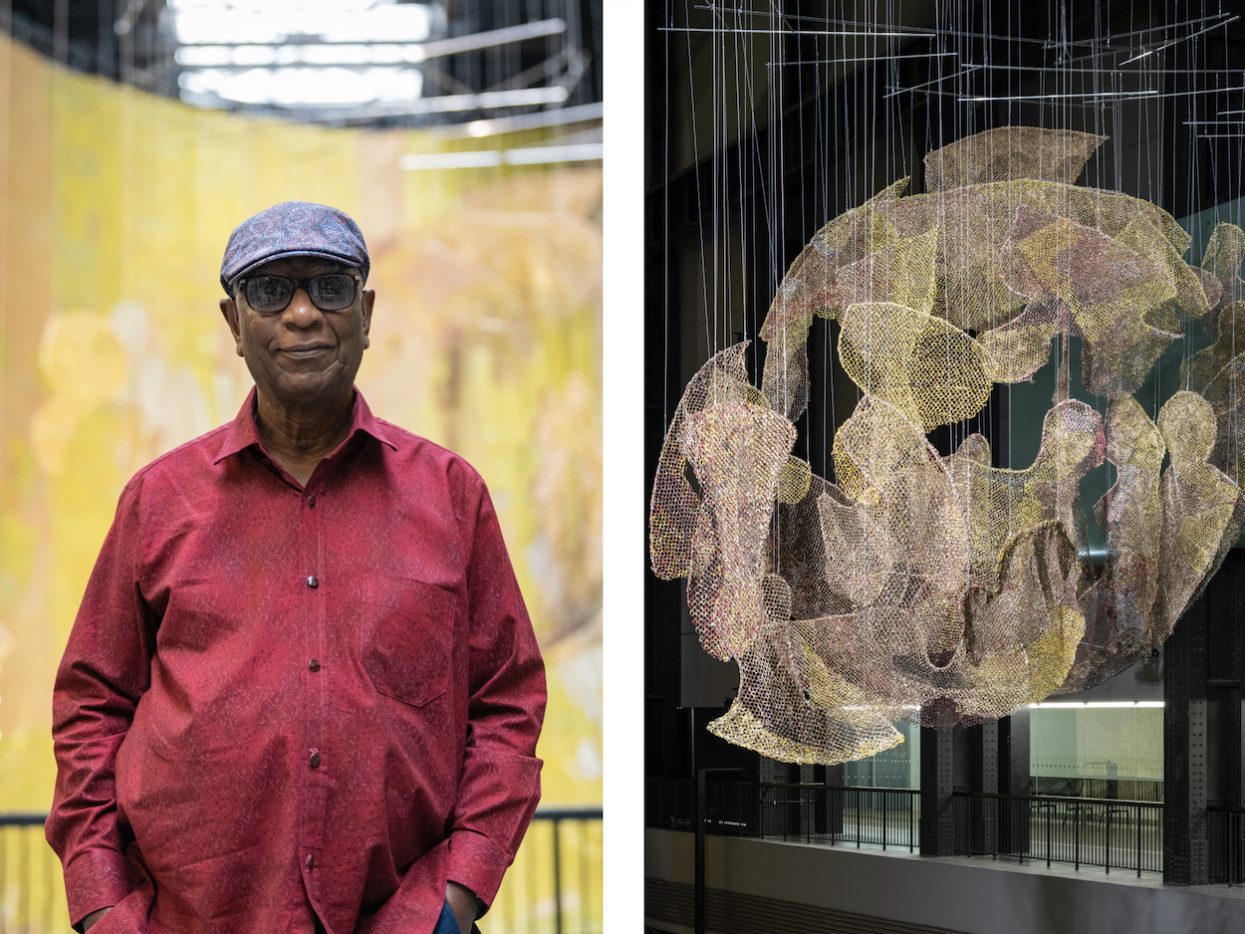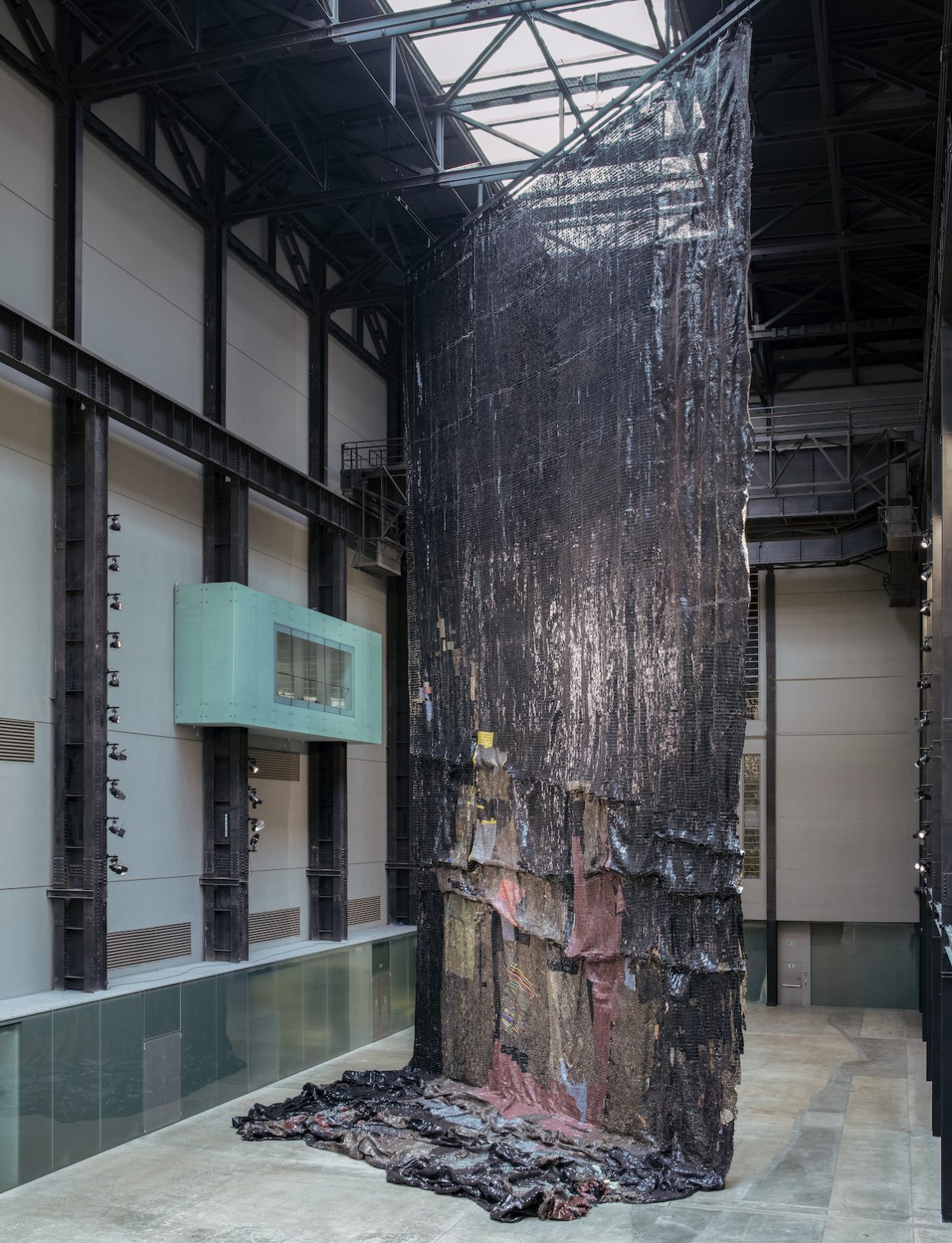London may offer a world-class helping of contemporary art all year round, but a multitude of marquee shows—Marina Abramović’s Royal Academy retrospective and the ambitious 1-54 Contemporary Art Fair, to name a couple—attracted hordes of deep-pocketed collectors to the British capital during Frieze Week. (But perhaps that’s not always positive.) Nevertheless, few were as staggering in scale and scope as El Anatsui’s monumental textile-style sculptures undulating within Tate Modern’s soaring Turbine Hall, a vast industrial space the museum activates for the annual Hyundai Commission. Previous recipients stunned—Anicka Yi’s “aerobe” machines sculpted the air while Kara Walker’s somber fountain exposed chilling injustice—but the 79-year-old Anatsui turns trash into artistic treasure.
Anatsui, who splits time between Nigeria and Ghana, sculpts with thousands of recycled bottle caps stitched together to create expansive mosaics meditating on human history and the natural world’s elemental power. His Tate commission, the largest of his career, unfolds in three acts, beginning with a “blood moon” resembling a ship’s sail billowing out in the wind as it journeys across the Atlantic. The second one layers human figures, suspended restlessly, that unite into a singular Earth-like form. The final piece stretches black metal cloth from floor to ceiling, signifying waves cascading onto rocky peaks and echoing the collision of global cultures and hybrid identities stemming from migration. They take advantage of the hall’s profusion of natural light to create dazzling color play inside as the day progresses.


